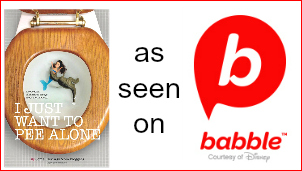After four children, I think it’s safe to say that I’ve read almost every children’s book that’s out there.
Some of them are fantastic.
Some of them are fine, if you read them once or twice, but after thirty-thousand times, even Good Night, Moon gets a little dicey.
Some of them, I’ve written about before.
I wrote about the insane ABC book.
Nicole Leigh Shaw invited me to ride her Character Assassination Carousel, and I wrote about Bert and Ernie and their misadventures with a mop.
After reading to Tiny, last night, and the millionth time having to explain this book to, yet another, child, today, I thought I’d share with you the book Opposites.
The premise is simple enough.
Take a bunch of pictures of things that are opposites, write the words, and teach the kiddies a thing or two.
However, implicit in a children’s book is the understanding that the information will be presented in a way that doesn’t confuse the kids.
I think someone forgot to tell this to this particular author.
In all fairness, most of the book is straightforward.
You have “above.”
And then you have “below.”
You see a kitten that is “awake.”
And then you are shown a kitten that is “asleep.”
But, what about words that may be opposite, but you can’t really find one subject that demonstrates both words?
Just take two things that are completely unrelated and put them together, I guess.
For example;
“Soft”
Aw.
Look at the cute bunny.
Look at the cute, soft bunny.
Don’t you want to pet and kiss that cute soft bunny?
Totally an example of soft.
But how do you use a picture of a bunny to show “hard?”
Take a visit to a taxidermist?
Put it in a leather vest and pop a lit cigarette in it’s mouth?
Serve it, well-done, with a nice bearnaise sauce?
Nope.
My friends, to make a bunny into an example of “hard,” you turn it into…
A Volkswagen Beetle.
I get it…it’s hard to make a bunny look hard.
However, maybe if that’s the case, you pick something else.
Like gum in someone’s mouth and gum under the desk in a classroom.
Or, if it’s too difficult, then skip that set of opposites.
Because, here’s what happens my friends.
When Tiny reads the book (and his sister and brothers before him, I might add) he reads it fine.
“Soft!’
“Hard!”
But, in general conversation, when you say, “Hey Tiny! What’s the opposite of ‘soft?'” the kid responds with a proud shout, “A car!”
And what about the pictures that are straightforward, but still manage to confuse the tykes?
Pictures for words like “left” and “right.”
Left.
Right.
Okay, I get it and I can see the logic in the example.
However, I’m 42 and feel like I have a pretty strong grasp on the concept of left and right.
Most of the time.
And if I am feeling muddled and confused about it, I simply pretend I’m about to say the Pledge of Allegiance and it clears things right up.
But this picture?
Let me explain.
We turn to this page and Tiny says “Left!’ turns the arrow and says “Right!” and I say, “Yes!”
And then he says (every single time) “This side is left!” and puts his hand over the word ‘left,’ which is actually on the right side of the page.
And I say, “Correct! Well, no, actually. That’s the word left, but it’s the right side of the page.”
And he lifts his right hand and says “left!”
And I say, “No, that’s your right hand.”
And he points to the word “left” on the paper and says, “This says ‘left!'” and I say, “Yes!”
And the whole thing starts again.
Maybe we could have just had the word “right” on the right hand side of the page and the word “left” on the left hand side of the page and left it at that.
But, what do I know?












